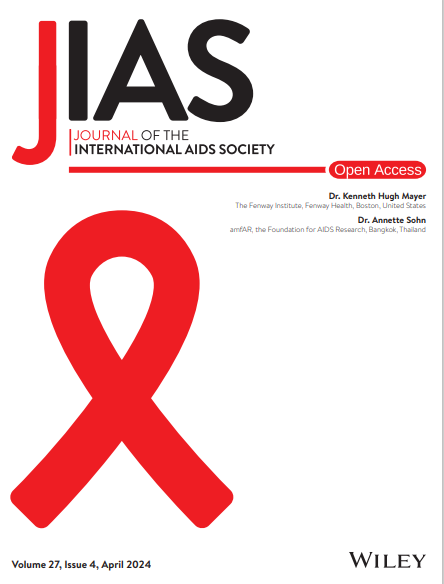Oral pre-exposure prophylaxis initiation, continuation and adherence among pregnant and postpartum women receiving antenatal and postnatal care: a systematic review
Abstract
Introduction
In 2023, one-fourth of new HIV acquisitions in children globally resulted from vertical transmission following incident HIV during pregnancy or breastfeeding. Oral pre-exposure prophylaxis (PrEP) with tenofovir disoproxil and emtricitabine is safe and effective in pregnancy and postpartum, with long-acting options emerging. Integrating PrEP into antenatal and postnatal care (ANC/PNC) is a crucial person-centred approach to prevent maternal HIV acquisition and vertical transmission. This review summarizes oral PrEP initiation, continuation and adherence among pregnant and postpartum women receiving ANC/PNC.
Methods
We systematically searched three databases for English-language quantitative studies published between 1 January 2015 and 28 March 2024. Eligible studies focused on pregnant and/or postpartum women accessing PrEP through ANC/PNC, and reported on initiation (receipt of prescription or self-reported use), continuation (persistent use over time) and/or adherence (self-reported and/or objective).
Results
We identified 481 articles; 12 studies from Kenya, Lesotho, Malawi and South Africa met our inclusion criteria. Study heterogeneity (e.g. definitions used, population included, follow-up time) precluded meta-analysis. All studies enrolled pregnant women; three also enrolled postpartum women. Median gestational age at enrolment ranged from 20 to 26 weeks, and follow-up periods from 1 month post-enrolment to 12 months postpartum. Oral PrEP initiation ranged from 14% to 84%. Continuation at 3 months ranged from 22% to 90% and declined postpartum in all studies. Self-reported adherence (daily use) ranged from 11% to 81% in the past 7 or 30 days at 1 month (four studies) and from 54% to 81% at 3 months (two studies). Objectively measured adherence ranged from 34% to 62% for detectable tenofovir or tenofovir diphosphate levels at 1 month (three studies). One Kenyan trial demonstrated that universal versus risk-based offers of oral PrEP resulted in similar PrEP use and HIV incidence. Two-way SMS communication (Kenya) and real-time adherence biofeedback counselling using urine tenofovir testing (South Africa) enhanced PrEP continuation/adherence compared to standard-of-care.
Discussion
Integrating oral PrEP into ANC/PNC showed high initiation among pregnant/postpartum women; however, continuation and adherence were suboptimal.
Conclusions
Oral PrEP integration into ANC/PNC can reach pregnant/postpartum women. Maximizing its impact will require offering long-acting PrEP, person-centred interventions to support adherence/continued use and differentiated delivery responsive to women's needs.
PROSPERO Number
CRD42024513442


 求助内容:
求助内容: 应助结果提醒方式:
应助结果提醒方式:


